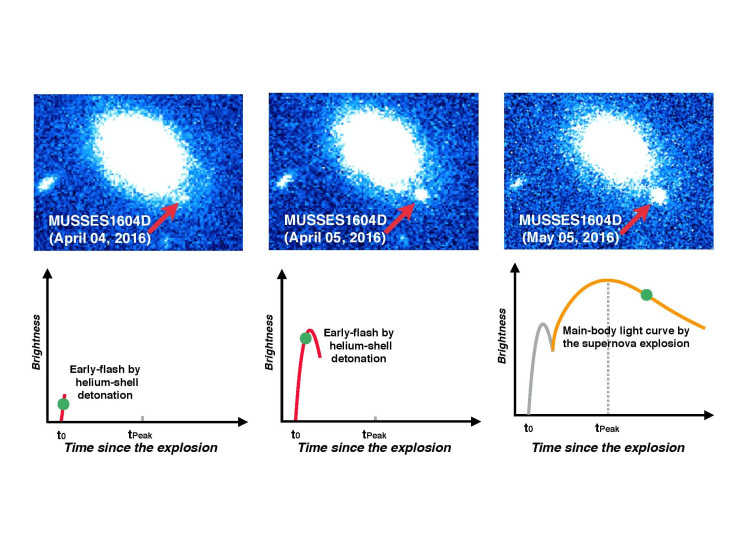Supernova Explosions Of Some White Dwarf Stars Triggered By Excessive Helium

Among the two types of supernova explosions that are known to occur in the universe, there is one fundamental difference — the number of stars involved, which could be one or two. When one star — specifically a white dwarf — from a binary system explodes, it is called a Type Ia supernova and is used by astronomers to measure the rate of the universe’s expansion.
Even though there is a lot we have learned about Type Ia supernovae over the years, there is still much we don’t know, such as the exact mechanism that causes them. We know, for instance, that one of the stars in the binary system — the one that will eventually explode — must be a carbon-oxygen rich white dwarf star, the remnant of the main sequence star much like the sun. We know also that the nuclear chain reaction that causes it to go supernova happens when the white dwarf reaches about 1.4 solar masses (the resulting flash of light, though, is about 5 billion times brighter than the sun).
This increase in mass of the white dwarf is made possible by it accreting or stealing material from its companion, which could be anything from a giant star to a smaller white dwarf. But it is only now that scientists have formulated a theory, backed by observational evidence, to explain one of the possible mechanisms that lead up to the explosion after the accretion.
A large team of Japanese scientists hypothesized that “Type Ia supernova could be the result of a white dwarf star consuming helium from a companion star. The extra helium coating the star would trigger a violent burning reaction, which in turn would trigger the star to explode from within as a supernova,” according to a statement Thursday by the Kavli Institute for the Physics and Mathematics of the Universe.
Using the Hyper Suprime-Cam instrument on the Subaru Telescope, the team discovered 100 supernovae in a single night, of which one was a Type Ia that had exploded only a day earlier.
“By comparing the observational data with what we calculated on how burning helium would affect brightness and color over time, we found both theory and observation were in good agreement. This is the first time anyone has found solid evidence supporting a theory,” Keichi Maeda of Kyoto University, who was one of the co-authors of a paper on the subject, said.
The University of Tokyo explained the mechanism further in a statement. As helium taken from the companion star accumulates on the surface of the white dwarf, it undergoes violent and explosive burning. The shock waves generated as a result move inward toward the star’s core, where they eventually lead to the ignition of the carbon, leading to the supernova.

“Studying Type Ia supernovae is important because they are a valuable tool researchers use to measure the expansion of the universe. A more precise understanding of their history and behavior will help all researchers obtain more accurate results,” co-lead author of the study and professor at University of Tokyo’s School of Science Mamoru Doi, said in the statement.
Since supernovae occur when the exploding white dwarf stars reach a specific mass, the ensuing brightness is the same and can, therefore, be used as a standard. The brightness that is visible from Earth can be used to determine the distance at which the explosion occurred and using them as reference points in space, allowing scientists to calculate the speed of the universe’s expansion. However, the fact that supernovae only occur about once every 100 years or so in any galaxy (they occur in all types of galaxies) makes the events rare.
While the discovery of the role of helium in supernova explosions is important, it tells only a part of the story.
“In this study, we found that a supernova was the result of the interaction between a white dwarf star and a companion star made of helium. But do we know whether this companion star was also a white dwarf star or a star much like our Sun? No we don’t,” Ken’ichi Nomoto from Kavli said in the statement.
The paper, titled “A hybrid type Ia supernova with an early flash triggered by helium-shell detonation,” appeared online Wednesday in the journal Nature. Other than Doi, its lead author was Ji-an Jiang, a Ph.D. candidate at the University of Tokyo.
© Copyright IBTimes 2024. All rights reserved.





















